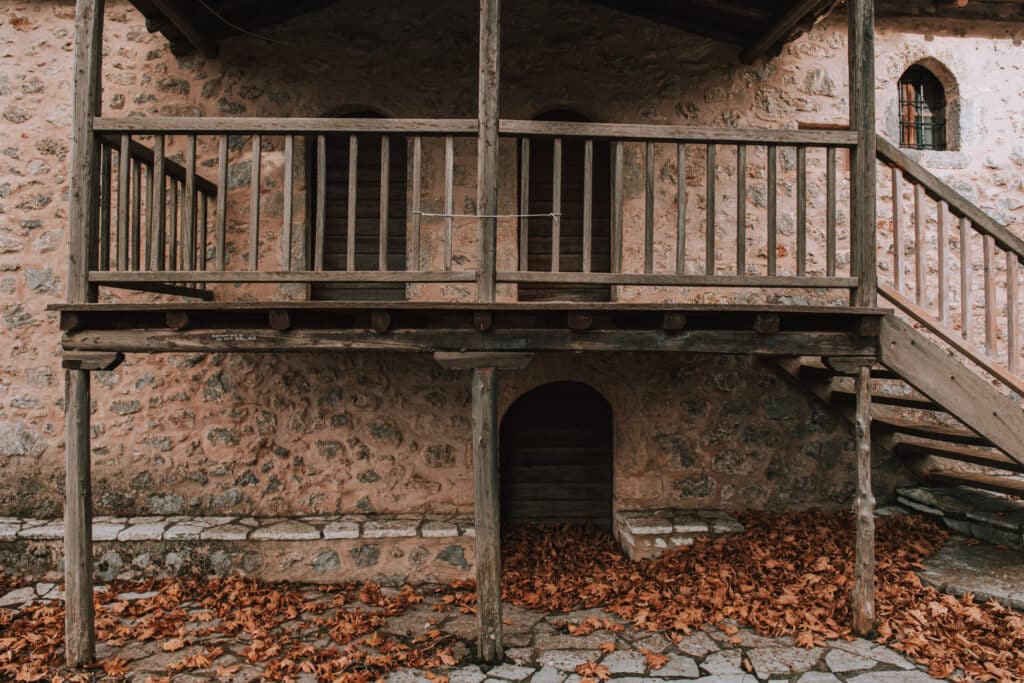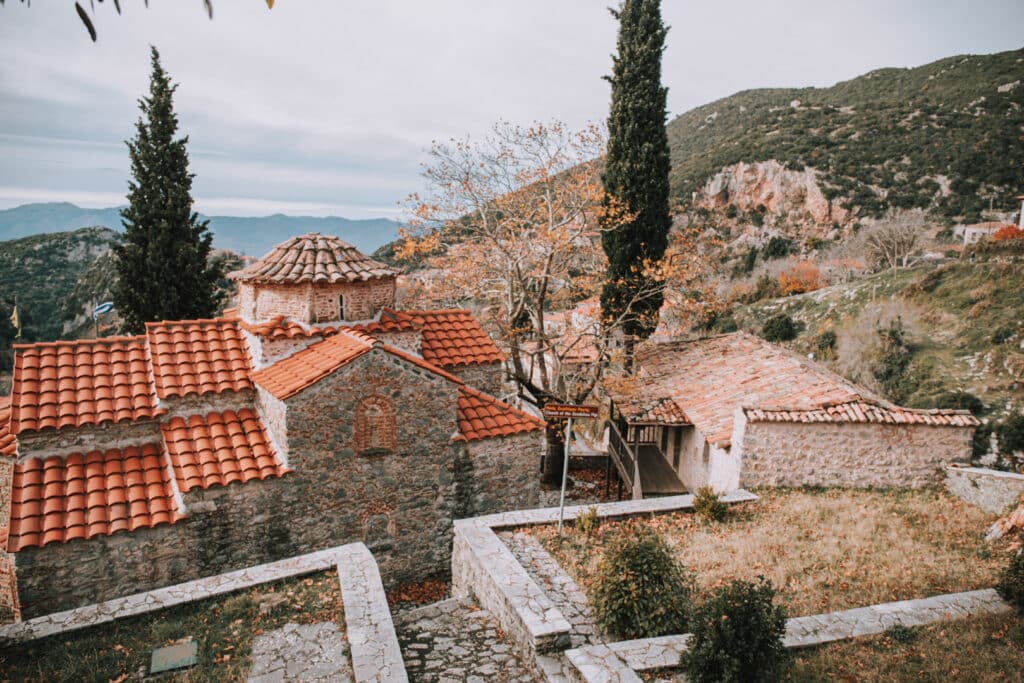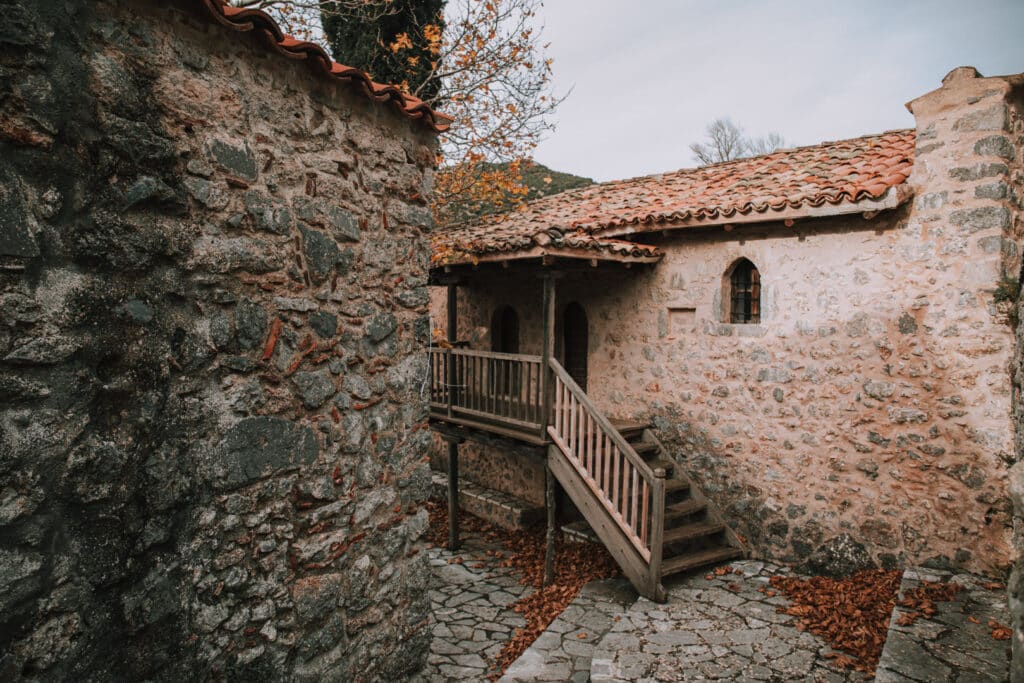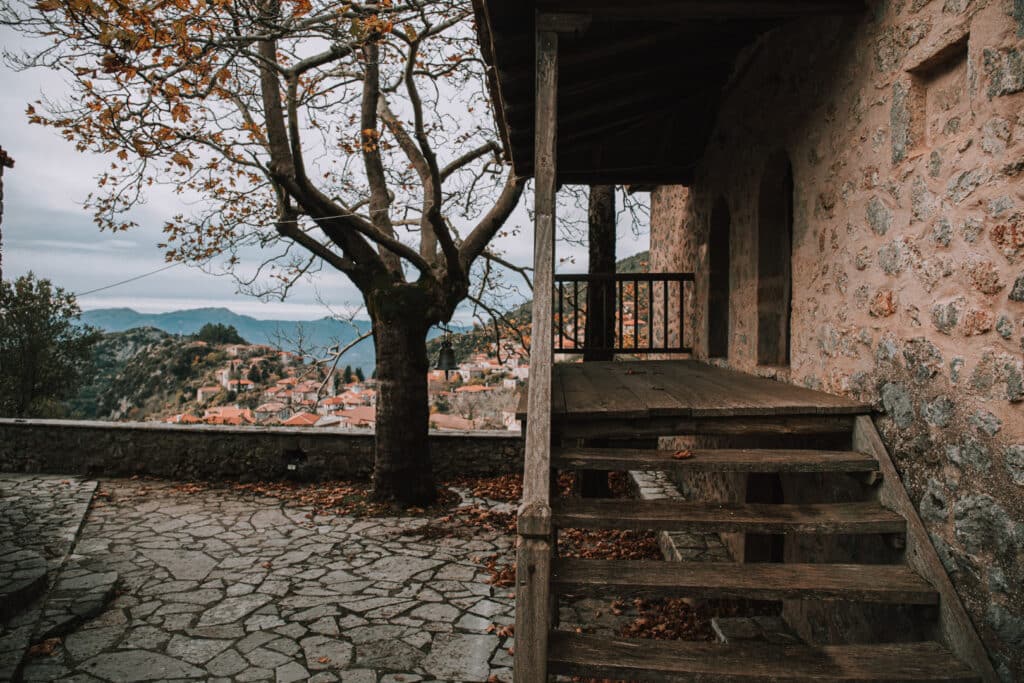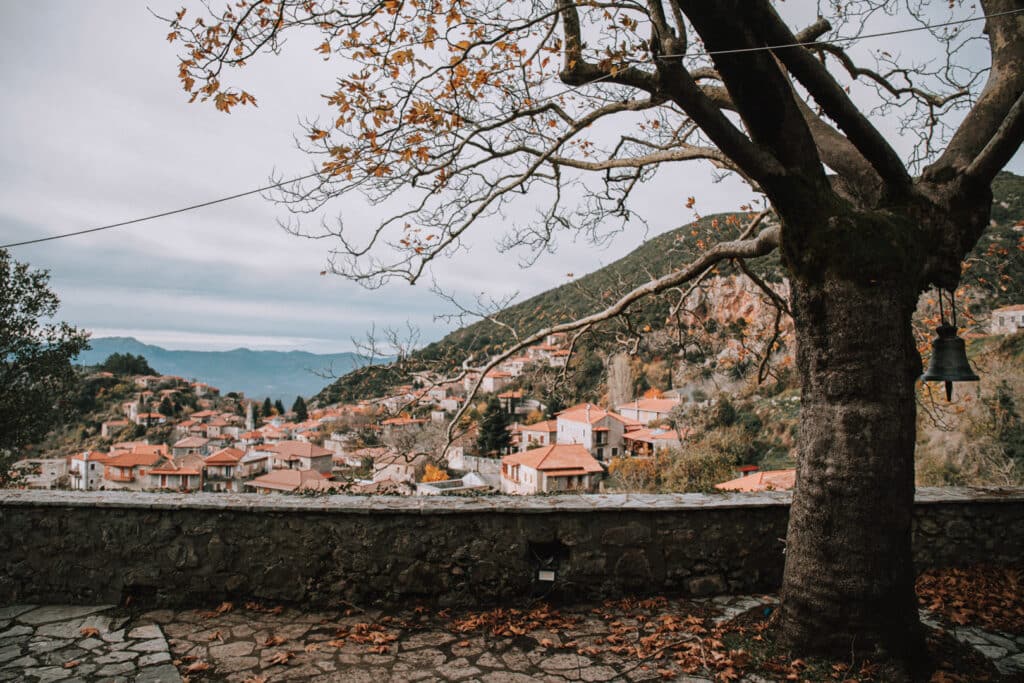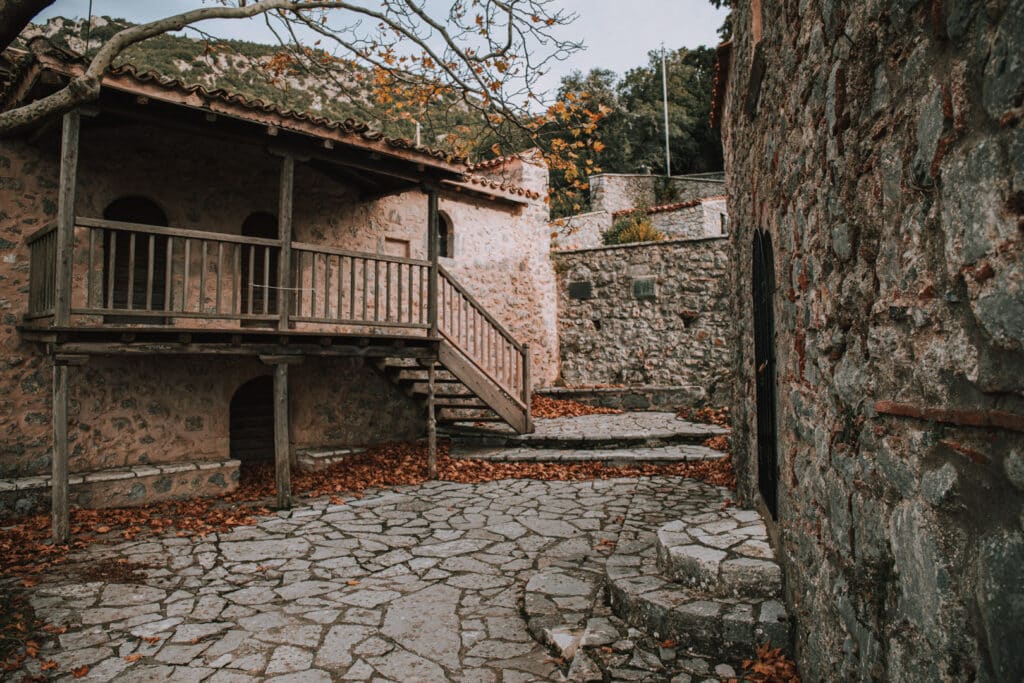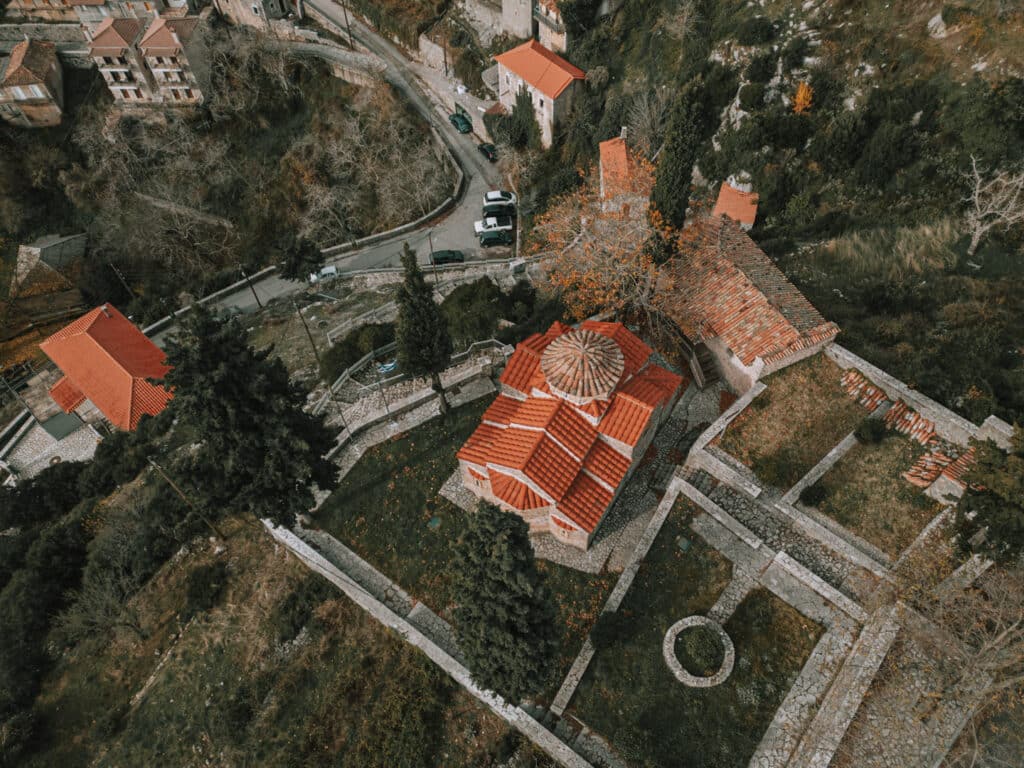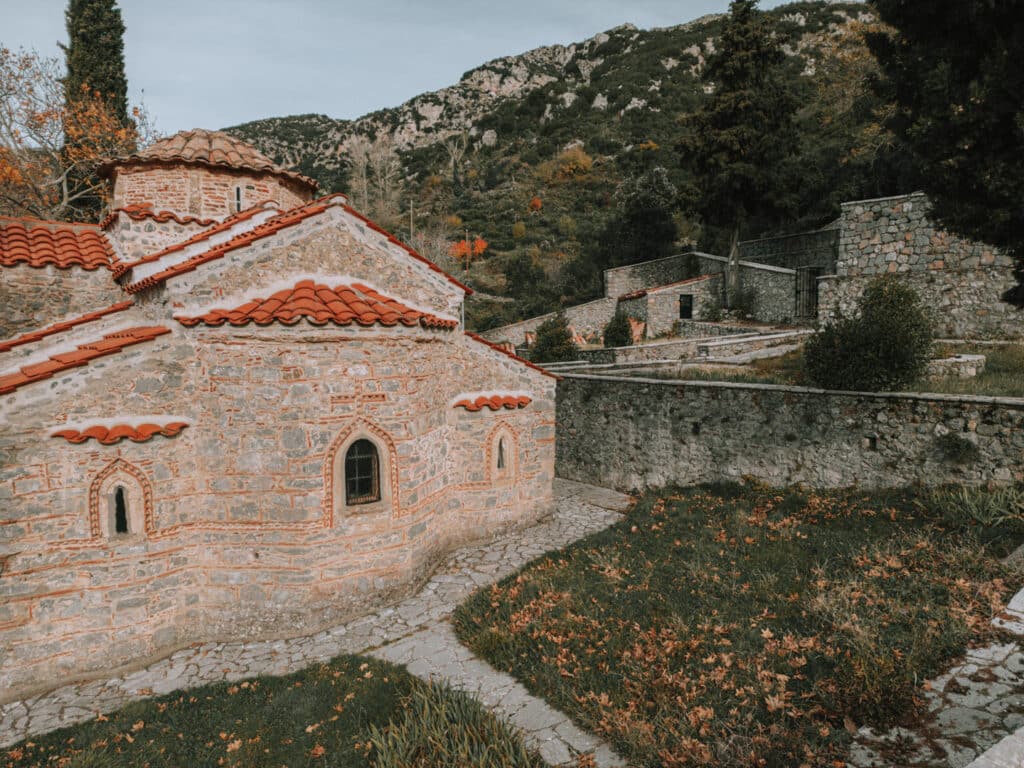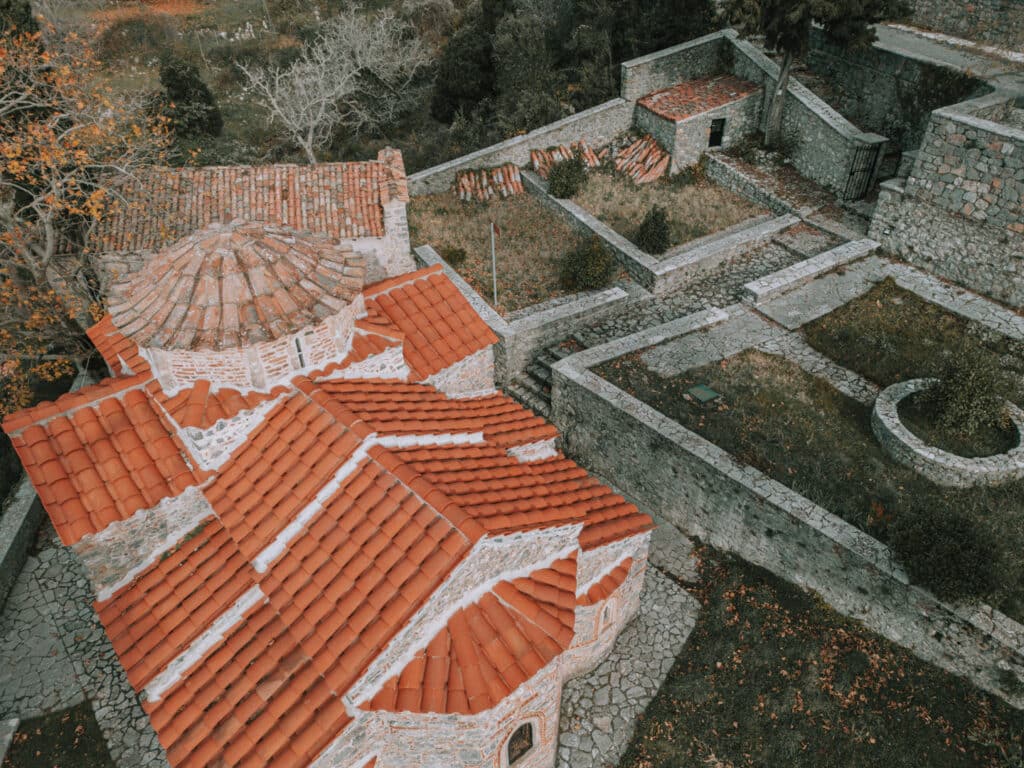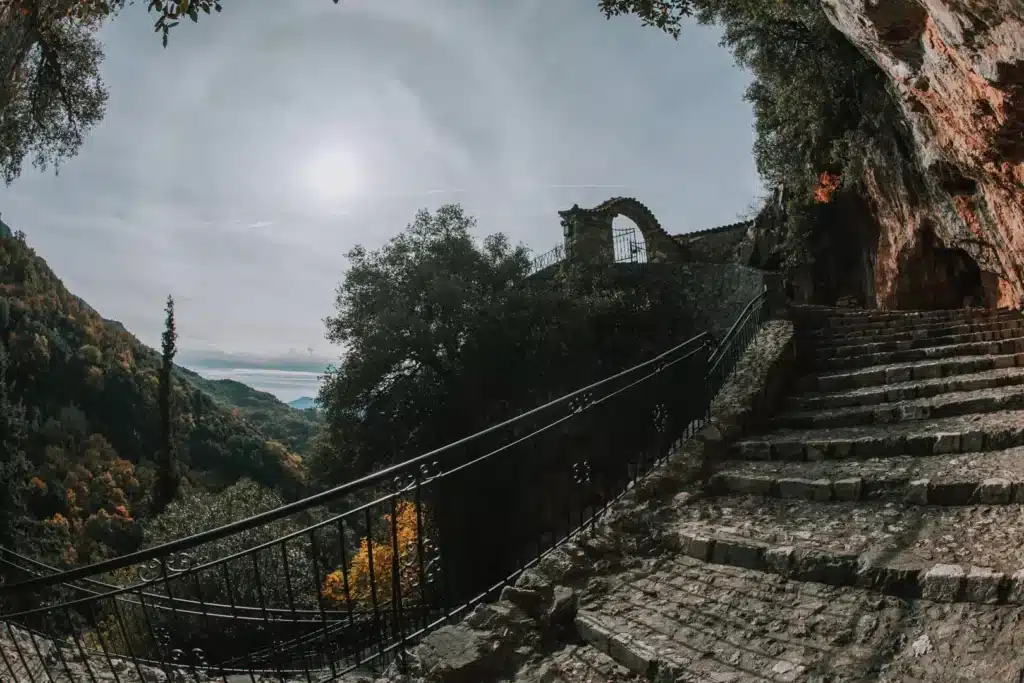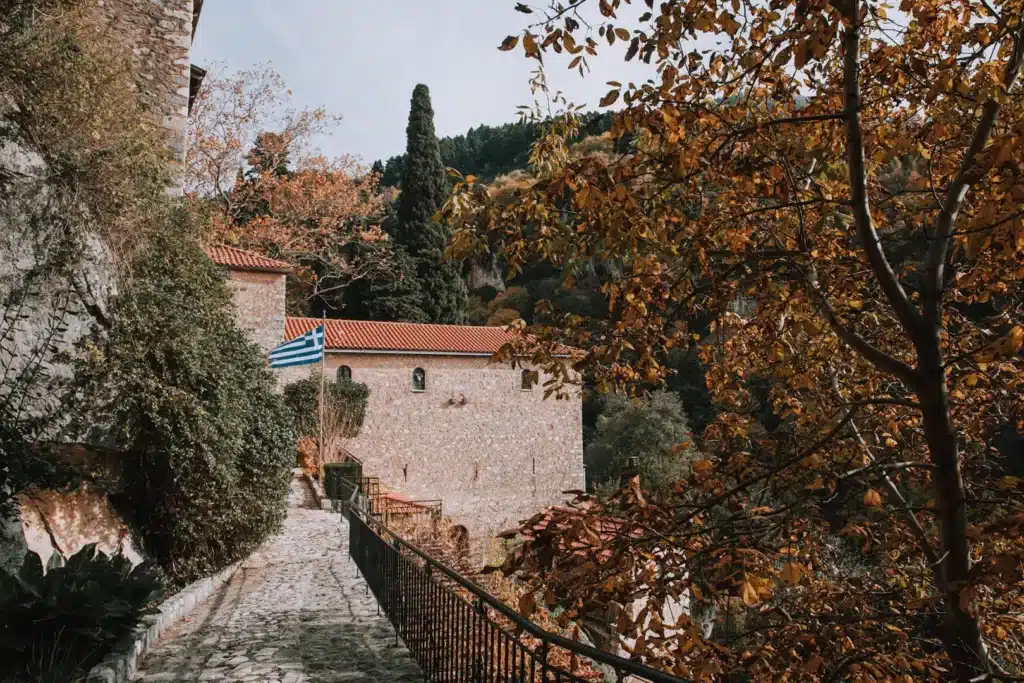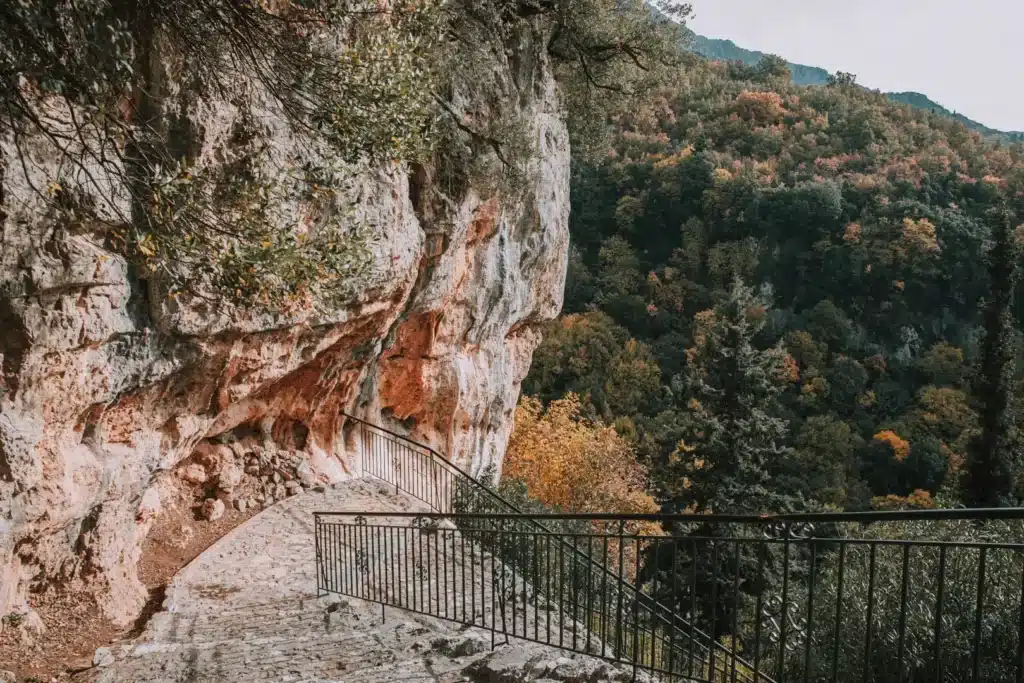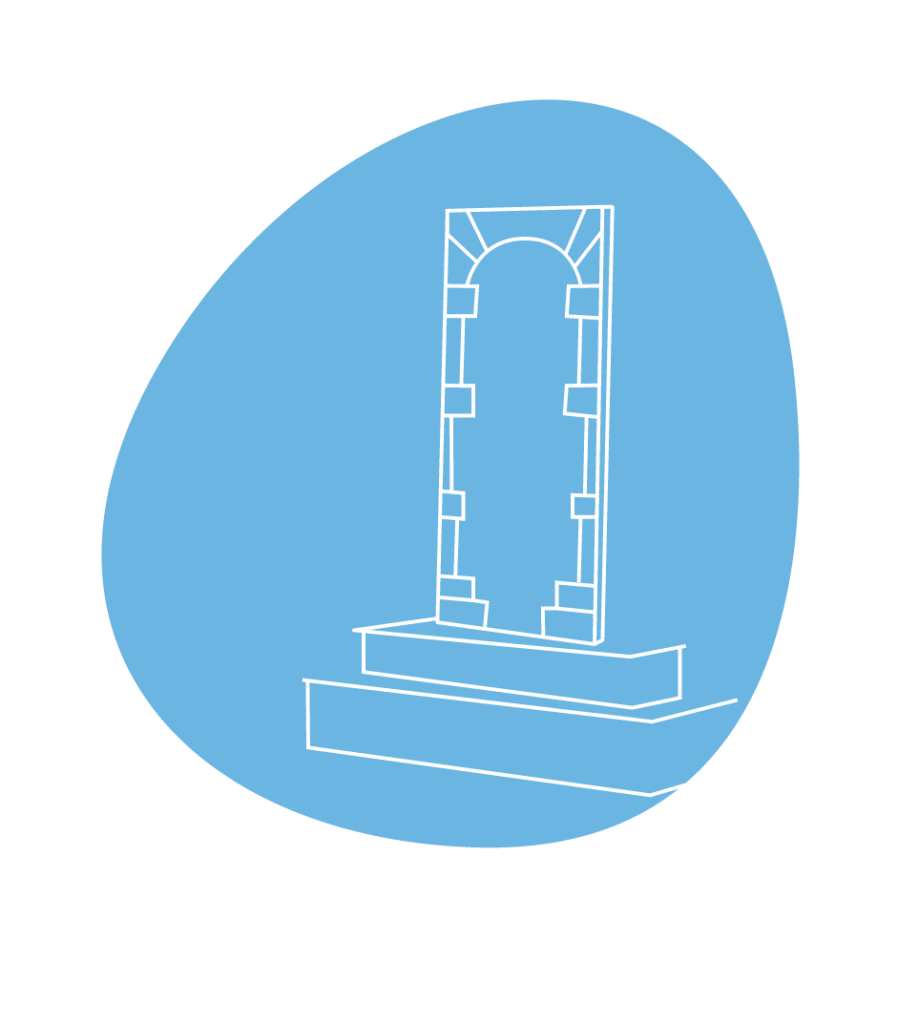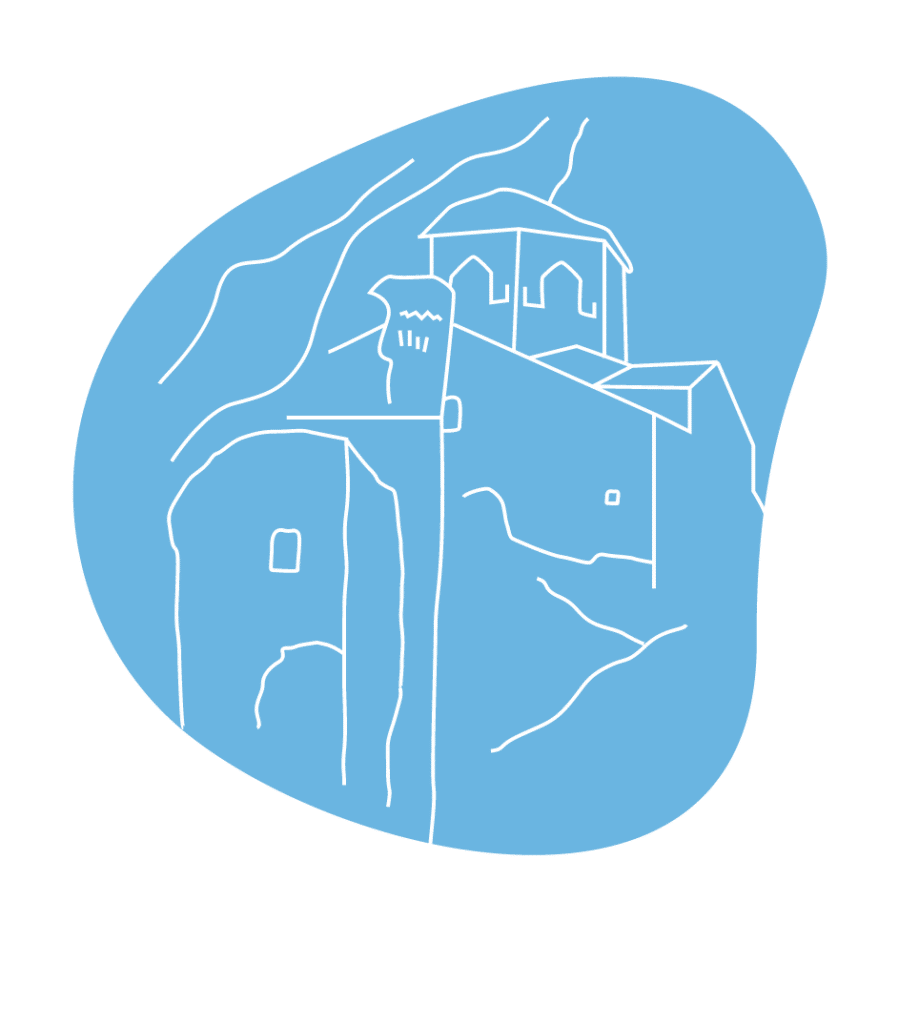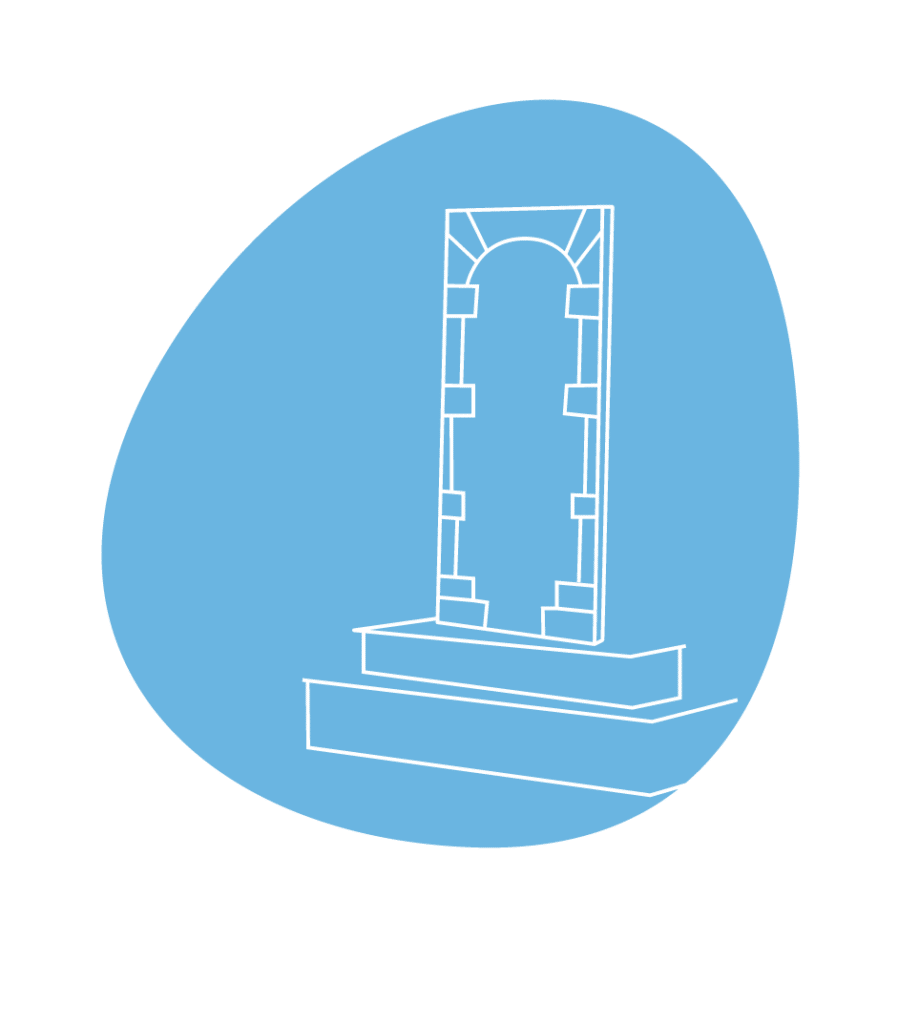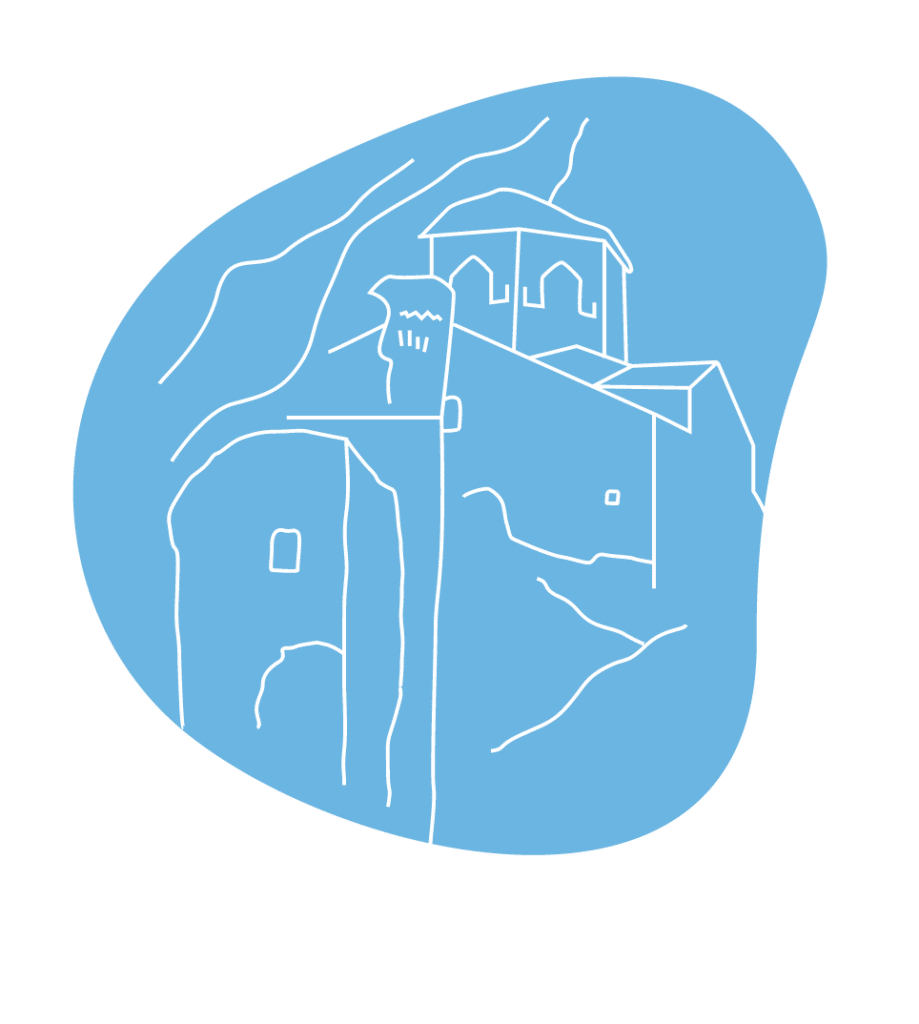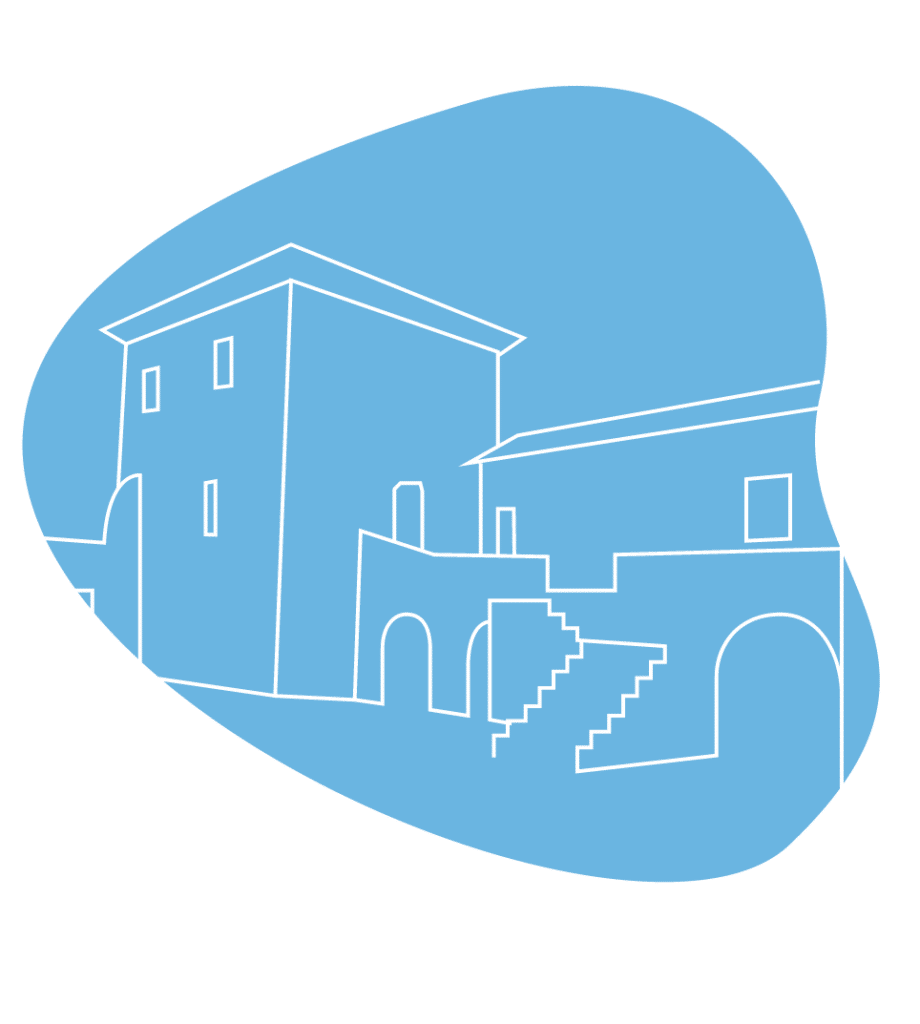It was founded in 963 AD by the chief secretary of the Byzantine Emperor Nikephoros II Phokas, Ioannis Lampardopoulos, who also gave the name “Philosopher” to the Monastery. In 1691, the Monastery was relocated (New Monastery) for easier access.
The Old Monastery is the most historic in Arcadia, and is also known as “Krifo Scholio”, since, according to tradition, a secret school operated there during the Turkish occupation, which later evolved into a great priestly school that operated in the New Monastery.
Famous from one end of the Greek territory to the other, the Holy Monastery of the Philosopher, besides being a religious beacon throughout the centuries, was also a source of education for thousands of people and leading figures of the church during the “dark” years of the Ottoman occupation in Greece.
Built on the sacred rock of Monoporos, almost wedged on the ravine of the river Lousios, the Monastery of the Philosopher is a great monument of tradition, history and religiosity of the Greeks. It consists of two monastic complexes, the Old and the New one, which are located at a short distance from each other.
The Old Monastery of the Philosopher was founded in 963 AD by the chief secretary of the Byzantine emperor Nikephoros II Phokas, Ioannis Lampardopoulos, who was better known in the region as “Philosopher”. In fact, according to historical reports, the emperor himself became a monk at the Monastery after resigning from his office. In the sigillion of the Old Monastery, there is the first historical reference to Dimitsana.
Today, although it is in ruins, its katholicon is preserved with amazing frescoes. In addition, remains of two towers are preserved, one on the extreme left of the building and one on the right, as well as the supply pipe that brought water to the Monastery.
However, the fact that it was built on hard-to-reach terrain, which posed obstacles both to the supply and to the approach to the Monastery, is considered to this day as one of the main reasons for its relocation to a new, more accessible place, despite the economic boom it experienced during the 17th century.
Therefore, the Old Monastery of the Philosopher was moved to a new location further east, at about one kilometer. The New Monastery was founded in the year 1691, and according to the founding inscription placed above the lintel of the main entrance, it was built with the care and expense of the monks Pachomios, Grigorios and Parthenios, as well as of the abbot Anthimos. The archmaster of the Monastery was George Arvanitis, who came from Bithekouki in Northern Epirus.
Today, the tower, in which monks and visitors reside, is preserved in a very good condition, as well as the katholikon, dedicated to the Dormition of the Virgin Mary. The katholikon is in the form of crossed-dome plan of complex tetragonal type and has simple facades with ceramic decoration. The frescoes that adorn the temple are of Cretan style and are attributed to the painter Victor. It also has a remarkable wood-carved iconostasis.
Over the centuries, the Monastery of the Philosopher became a spiritual and educational center, even taking the nickname “krifo scholio” (secret school) since the years of the Old Monastery. Later, after its establishment in the new location, it developed into a significant hieratic school, from which 7 Patriarchs, 70 Bishops and approximately 3,500 scholars graduated. During the Turkish rule, according to tradition, it also functioned as a school for young Greek children who learned the language and the traditions before the liberation of the Greek territory.
The school operated in New Monastery until 1765 AD, and then it was moved to Dimitsana together with its great library. In 1834 AD, it was closed by a decree of the Regency, and specifically, of the responsible minister Schinas, who ordered its dissolution and the sale of its property.
In 1955, it was declared a preserved monument, while in 1992 it began to be radically renovated under the supervision of the Ministry of Culture. Today, it functions as a men’s monastery.
Διαδρομες
Ιερά Μονή Ζωοδόχου Πηγής Στεμνίτσας
Το γραφικό και ιστορικό χωριό της Δημητσάνας αποτελεί βασικό θεματοφύλακα ιστορικών και λαογραφικών παραδόσεων του ελληνικού γένους. Στη βιβλιοθήκη της, εκτός από τα εμπλουτισμένα με 35.000 τόμους βιβλίων ράφια.
Αρχοντικό των Δεληγιανναίων
Το οίκημα δεσπόζει στον Πάνω Μαχαλά του ιστορικού χωριού Λαγκάδια, το οποίο, εκτός από σημαντικούς χτίστες, χάρισε στην Ελλάδα την περίφημη οικογένεια των Δεληγιανναίων, προεστών του Μοριά πριν από την Επανάσταση. Από την οικογένεια Δεληγιάννη προήλθαν και δύο Πρωθυπουργοί στα χρόνια μετά την απελευθέρωση.
Dimitsana Historic Public Library
The picturesque and historical village of Dimitsana is a key depository of historical and folklore traditions of the Greek nation. In its library, apart from the shelves enriched with 35,000 volumes of books, the visitor can also admire important relics and memorabilia from various moments of the glorious past.





